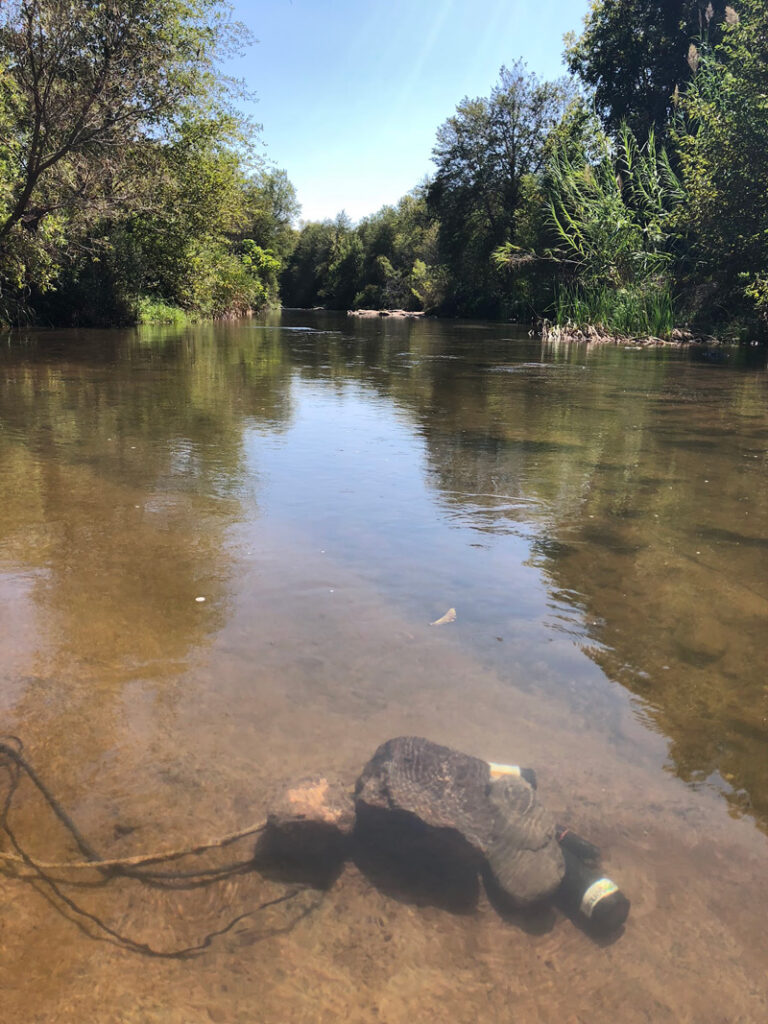In March 2023, the Guardian reported a “wall of dead fish” blanketing Australia’s Darling-Baaka River. Bodies of belly-up cod, carp, and perch bumped against each other across a 10-kilometer (6-mile) stretch of river. It was a grim sight, but not uncommon. This was the third fish kill in 4 weeks on Australia’s third-longest river.
The culprit was hypoxia, a low-oxygen condition that generally makes headlines when it strikes coasts and lakes, not on rivers. Hypoxia occurs when the dissolved oxygen content of water dips below 2 milligrams per liter (2 parts per million).
A range of environmental conditions can trigger hypoxia, but still and stratified water is especially vulnerable. It’s generally assumed that the turbulence of rivers allows for adequate oxygen exchange with the atmosphere and that hypoxia is rare.
But a new study in Limnology and Oceanography Letters examined river samples from 95 countries and found low dissolved oxygen conditions in one in eight rivers worldwide. The phenomenon is far more prevalent than researchers previously understood.
The Power of Public Data
Scientists have tracked dissolved oxygen in rivers for decades. The new paper references a slew of studies from the past century, including a 1925 oxygen survey on the Ohio River in the United States and a 2018 report linking hippopotamus feces to Brazilian fish kills.
“There’s been these examples [of hypoxia] from across the globe,” said Joanna Blaszczak, a biogeochemist at the University of Nevada, Reno, and lead author of the study. “What was missing was the synthesis of all of these different conditions and locations.”
“It’s so much more than the 10 people that were on this paper could ever possibly measure on our own.”
The new study includes data from every continent except Antarctica and leaned heavily on public government data sets. For data-scarce regions in South America and Africa, the researchers tapped into their networks to ask colleagues for information.
“It’s so much more than the 10 people that were on this paper could ever possibly measure on our own,” Blaszczak said of the joint effort. “It’s incredible.”
The final analysis included 118 million paired observations of dissolved oxygen and water temperature taken from 125,000 river locations. The global analysis showed a surprising 12.6% of river locations had at least one hypoxic measurement.
Hypoxia’s Biggest Triggers
The prevalence of oxygen-starved rivers allowed the researchers to compare hypoxic conditions across topographies, climates, and watersheds.
Overall, the slowest and smallest rivers were the most at risk. Slow-moving water has less turbulence, creating less opportunity for gas to be pulled from the air and dissolved. Shallow rivers have a low volume, meaning there’s less oxygen available to aquatic life and the water is at greater risk of oxygen depletion.
The most significant predictor for hypoxia, though, was maximum water temperature. Aquatic life requires more oxygen in warm environments. Warmer water can hold less dissolved gas than colder water. Warm rivers therefore release oxygen back into the atmosphere just as aquatic life needs it most. Australian ecologists assume the recent Darling-Baaka fish kills were caused in part by warm river temperatures, as well as an increase in fish populations competing for limited oxygen.
At the watershed level, the most common trait among hypoxic rivers was proximity to wetlands or urban centers. Both wetlands and city streams tend to have slower and less turbulent flows. In both settings, there’s also more organic matter, which can fuel bacteria production and devour the dissolved oxygen. Rivers surrounded by wetlands or cities had a 15%–20% chance of experiencing hypoxia—much greater odds than rivers near forests, grasslands, or even agriculture.
An Undercount
“I really liked this study; it’s the first, to my knowledge, to actually quantify the prevalence, the frequency, and duration of hypoxia in rivers.”
“I really liked this study; it’s the first, to my knowledge, to actually quantify the prevalence, the frequency, and duration of hypoxia in rivers,” said John Gardner, a hydrologist at the University of Pittsburgh. The results put a number on what researchers have otherwise just intuited, he said.
By spotlighting the prevalence of hypoxia, the study also encourages future research. “I think that it’s just opening the door,” Gardner said of the findings.

Even more rivers are likely affected by low dissolved oxygen. Roughly 90% of the locations in the study were on U.S. rivers using round-the-clock automated sensors to collect water observations. In many countries, river samples are collected manually and only periodically, providing only snapshots of conditions.
Likewise, manual sampling is often conducted during the day for the convenience of researchers. But dissolved oxygen dwindles overnight once photosynthesis stops. Blaszczak and her colleagues found that daytime-only water samples missed approximately 25% of hypoxic rivers.
The study has a heavy bias toward U.S. data, which the researchers recognize. But the findings still demonstrate a surprisingly prevalent problem. If current data show that one in eight rivers experiences short-term hypoxia, that rate will only increase as round-the-clock monitoring becomes more available around the world.
—J. Besl (@J_Besl), Science Writer

